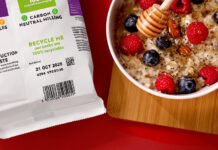There can be nothing more exasperating than a simple barcode which defies being read consistently. The consequences to the smooth running of a packaging production line are complex and costly, yet the solution can be quite simple, explains SICK (UK)’s Tim Stokes.

A few minutes of investigation, and some basic guidance on barcodes and barcode scanners could be sufficient to save hours of downtime. By solving the problem themselves, users will save the cost of an engineer callout or of buying an unnecessarily expensive scanner.
Of course, there are scanners, readers, coding and software which can overcome most of the problems of poor barcodes – and sometimes there is no alternative to purchasing a new system. However, it may be that additional costs can be avoided by getting the basics right first.
Providing users with a little help to ensure code integrity, as well as to identify the correct device to use with the barcodes they have, can make all the difference. That’s why SICK UK has launched CodeCalc, a dedicated website and free smartphone app. (www.codecalc.weebly.com).
CodeCalc provides a range of free help and support that, for example, can help users to identify their barcode type or spot simple faults in a barcode that can be put right quite easily. It also provides guidance on matching the right scanner to your system.
There’s even a section on the ‘sins’ of barcodes and how to avoid them. Understanding some simple principles will allow you to eliminate many initial problems and specify the correct reader for your application to avoid further difficulties.
1. Protecting the quiet zone
A simple 1-D code comprising dark bars and light spaces, a barcode as it is popularly known, has 6 basic components. These are: the quiet zone before the code starts; the start; the actual information; the check digit; the stop and the final quiet zone.
This is the basic functional design of all types of coding, and of 1-D and 2-D codes. If these are not present, you will get a ‘no read’ situation.
For example, quiet zones must be of a minimum length (depending on the code type used and its physical dimensions) as this allows the scanning program to get set up correctly and exit correctly.
So if you have squeezed the barcode onto a packet or machine part, and eliminated or shortened the quiet zones at one or both ends to get the label or print on, you are risking a ‘no read’. Other print (like the package design or another label) which impinges on the quiet zone may also create problems.
2. Ensure clarity and contrast
What of the actual bars of dark and light? These are of precisely calibrated thicknesses. So it stands to reason that, if they are distorted or the thicknesses inconsistent, they may become incorrect or meaningless; check that thin bars have the same width as thin spaces. This can easily happen with poor printing, photocopying or electronic scanning for print.
There must be sufficient contrast between the dark and light bars to enable the scanner to distinguish where the bars start and finish. Otherwise the data becomes incorrect or meaningless:
Poor quality printing, lack of ink or even attempts to reduce the visual impact of the barcoding for packaging design purposes should be considered as potential problems.
3. Seeing the light
Correct reading may be difficult where the light source illumination is insufficient, where there is atmospheric impairment between the scanner and the code (like water vapour, dust, etc,) or where the code is obscured or dirty.
4. Avoid poor printing
If the edges of the bars are poorly printed, there is not a good clean break between light and dark and the relative thickness of the bars is affected according to the scanner.
Another cause of faults is missing pixels due to print head problems, which can often be detected by thin lines down dark bars where they should be solid.
5. Match barcode and scanner
The specification of the scanner itself is important. The scanner detects the reflection back of a point of light travelling over the dark and light bars so, if the diameter of the spot is not properly matched to, say, the width of the bars, you could get it reading across two bars as if they were one. So, error readings should be checked to ensure the correct scanner specification for the barcode bar size.
6. Check the scanner position
Check how far the scanner is sited from the barcode being scanned – the diameter of the spot gets larger and more poorly focussed the further away it is. This is of course, more important with fixed scanners, say on a conveyor, than with handhelds. A further factor is the angle of the scanner to the object, and whether the object is moving too fast, as this may cause ‘blurring’ and false readings.
7. Use the right code
It’s also important to check which code you are using and if it is the right code to meet your needs. CodeCalc provides a comprehensive directory of barcode types for you to identify the correct code type, bar width and barcode cell size for your application.
Codecalc is downloadable onto a smartphone, so you can take it into the factory and use it without needing internet access. This means you can view actual examples of barcodes on the phone, identify discrepancies and nail down an accurate specification for any new scanners you need. CodeCalc also provides further details and examples to illustrate common problems, and what you can do to fix them.
Visit www.codecalc.weebly.com or use the QR Code to download the App.
• For more information on Sick barcode readers and scanners, please contact Andrea Hornby on 01727 831121 or email andrea.hornby@sick.co.uk.












